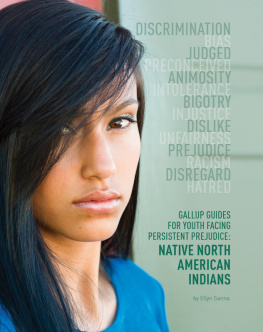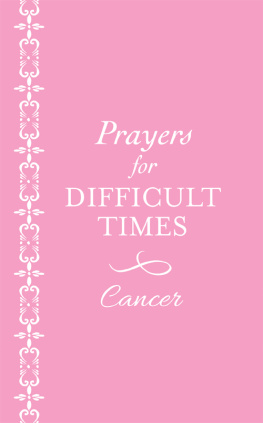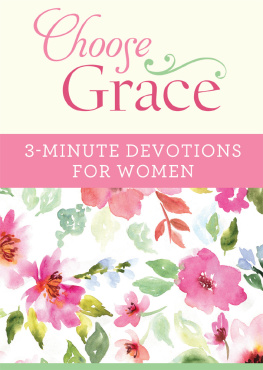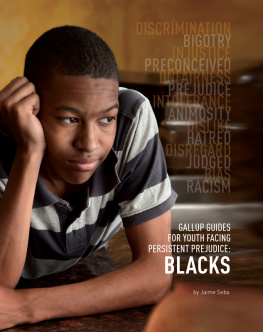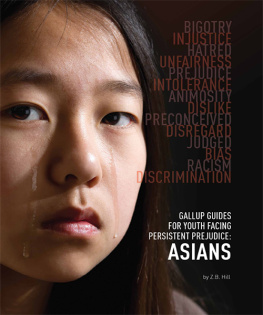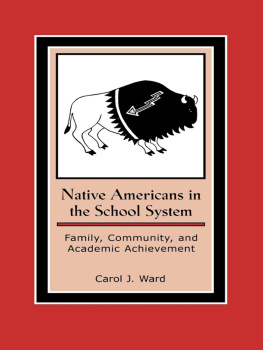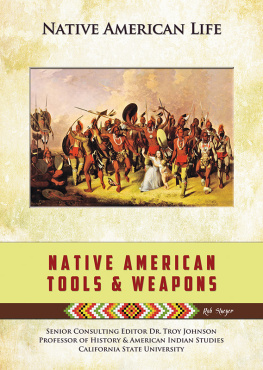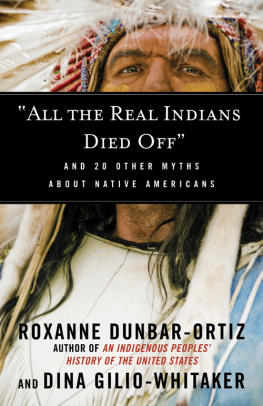G ALLUP G UIDES
FOR Y OUTH
F ACING P ERSISTENT
P REJUDICE
Native North American Indians
G ALLUP G UIDES
FOR Y OUTH
F ACING P ERSISTENT
P REJUDICE
Native North American Indians
Ellyn Sanna
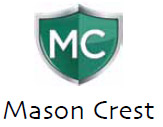
G ALLUP G UIDES FOR Y OUTH
F ACING P ERSISTENT P REJUDICE
Asians
Blacks
Hispanics
Jews
The LGBT Community
Muslims
Native North American Indians
People with Mental and Physical Challenges
 | Mason Crest
370 Reed Road
Broomall, Pennsylvania 19008
www.masoncrest.com |
Copyright 2013 by Mason Crest, an imprint of National Highlights, Inc. All rights reserved. No part of this publication may be reproduced or transmitted in any form or by any means, electronic or mechanical, including photocopying, recording, taping, or any information storage and retrieval system, without permission from the publisher.
Printed and bound in the United States of America.
First printing
9 8 7 6 5 4 3 2 1
ISBN-13: 978-1-4222-2462-5 (hardcover series)
ISBN-13: 978-1-4222-2469-4 (hardcover)
ISBN-13: 978-1-4222-9342-3 (e-book)
ISBN-13: 978-1-4222-2478-6 (paperback)
Cataloging-in-Publication Data on file with Library of Congress.
Sanna, Ellyn, 1957
Native North American Indians / by Ellyn Sanna.
p. cm. -- (Gallup guides for youth facing persistent prejudice)
Includes bibliographical references and index.
ISBN 978-1-4222-2469-4 (hardcover) -- ISBN 978-1-4222-2462-5 (series hardcover) -- ISBN 978-1-4222-2478-6 (pbk.) -- ISBN 978-1-4222-9342-3 (ebook)
1. Indians of North America--History--Juvenile literature. 2. Indians of North America-Social conditions--Juvenile literature. 3. Indians of North America--Crimes against--Juvenile literature. 4. Race discrimination--United States--Juvenile literature. 5. United States--Race relations--Juvenile literature. 6. India I. Title.
E77.4.S26 2012
970.00497--dc23
2012021142
Produced by Harding House Publishing Services, Inc.
www.hardinghousepages.com
Interior design by Micaela Sanna.
Page design elements by Cienpies Design / Illustrations | Dreamstime.com. Cover design by Torque Advertising + Design.
With thanks to Lawrence Jackson and Hunter RedDay for their help with this book. Special thanks also to Lauren Wilsey for her photography.
C ONTENTS

When you have nothing, says Hunter RedDay, you resent people who look like they have everything.
Hunter is a punk musicianand hes also a Native American. His mother is Din (what many white people refer to as Navajo), and his father is Sioux. His aunts are married to Blackfoot men, so Hunter has connections to several tribal groups. Hes thought a lot about prejudice and the ways it has affected people he knows.
Prejudice is a two-way street, Hunter believes. Its something experienceBut then they turn it around and send it right back, he says. Envy and jealousy turn into hatred. They turn into racism. When your only choices out on the Rez are death or jail, all you have to call your own is your desperation. Youre a captive, and racism is your cell. It keeps you inand it keeps everyone else out. Youre like an abandoned building, something thats empty and useless. Youre not really alive anymore. All youve got is rage, but you
High School Stereotypes
The average high school has its share of stereotypeslumping a certain kind of person together, ignoring all the ways that each person is unique. These stereotypes are often expressed with a single word or phrase: jock, nerd, goth, prep, or geek. The images these words call to mind are easily recognized and understood by others. But that doesnt mean theyre true!
Different Names
When Columbus saw the people who lived in the Americas, he named them Indians, since he wrongly believed he was in the outer reaches of India. The word stuck. It became one of the categories in our heads, another comprehensive stereotype where we could file in a single slot what are actually many different groups of people. To this day, Native people of the Americas are often called Indians in the English-speaking world, or Indios in Spanish. Today, many Native people prefer to identify themselves by the name of their individual tribes: Cherokee, Zuni, Houma, Din, and so on.
The term Native American is an alternative name that is used in the United States today, while many Canadians use the terms First Nations, Aboriginal people, and Indigenous people to refer to the same large group of people.
dont do anything with it, you dont use it to create anything new. Youre not evolving, youre not growing.
Hunter shakes his head, and he looks sad. Prejudice is a monster you cant really kill. Its just part of the human experiencelike lice and old age. Its part of the load you have to accept when youre human.
W HAT I S P REJUDICE ?
The root word of prejudice is pre-judge. Prejudiced people often judge others based purely on their race or ethnic group;

The word Native is used to refer to the people who lived in the Americas before Europeans arrived (as well as to their descendants who still live in the Americas today). Many groups of many different people, with many languages and many cultures, actually lived in the Americas. To the Europeans, however, they looked like one single group.
they make assumptions about others that may have no basis in reality. They believe that if your skin is darker or you speak a different language or wear different clothes or worship God in a different way, then they already know you are not as smart, not as nice, not as honest, not as valuable, or not as moral as they are. Native Americans have been the victims of prejudice ever since white people came to North America.
Why do human beings experience prejudice? believe humans have a basic tendency to fear anything thats unfamiliar or unknown. Someone who is strange (in that theyre not like us) is scary; theyre automatically dangerous or inferior. If we get to know the strangers, of course, we end up discovering that theyre not so different from ourselves. Theyre not so frightening and threatening after all. But too often, we dont let that happen. We put up a wall between the strangers and ourselves. Were on the inside; theyre on the outside. And then we peer over the wall, too far away from the people on the other side to see anything but our differences. Thats what has often happened when people of other ethnicities interacted in the United States.
And heres where another human tendency comes into play: stereotyping.
S TEREOTYPES
A stereotype is a fixed, commonly held idea or image of a person or group thats based on an of some observed or imagined trait. Stereotypes assume that whatever is believed about a group is typical for each and every individual within that group. Girls arent good at math, is a stereotype. White people cant dance, is another. People who wear glasses are nerds, is yet another, and All hairdressers are gay, is one as well.
Many stereotypes tend to make us feel superior in some way to the person or group were stereotyping. Not all stereotypes are negative, however; some are positiveBlack men are good at basketball, Gay guys have good fashion sense, or Asian students are smartbut that doesnt make them true. They ignore individuals uniqueness. They make assumptions that may or may not be accurate.
Next page
